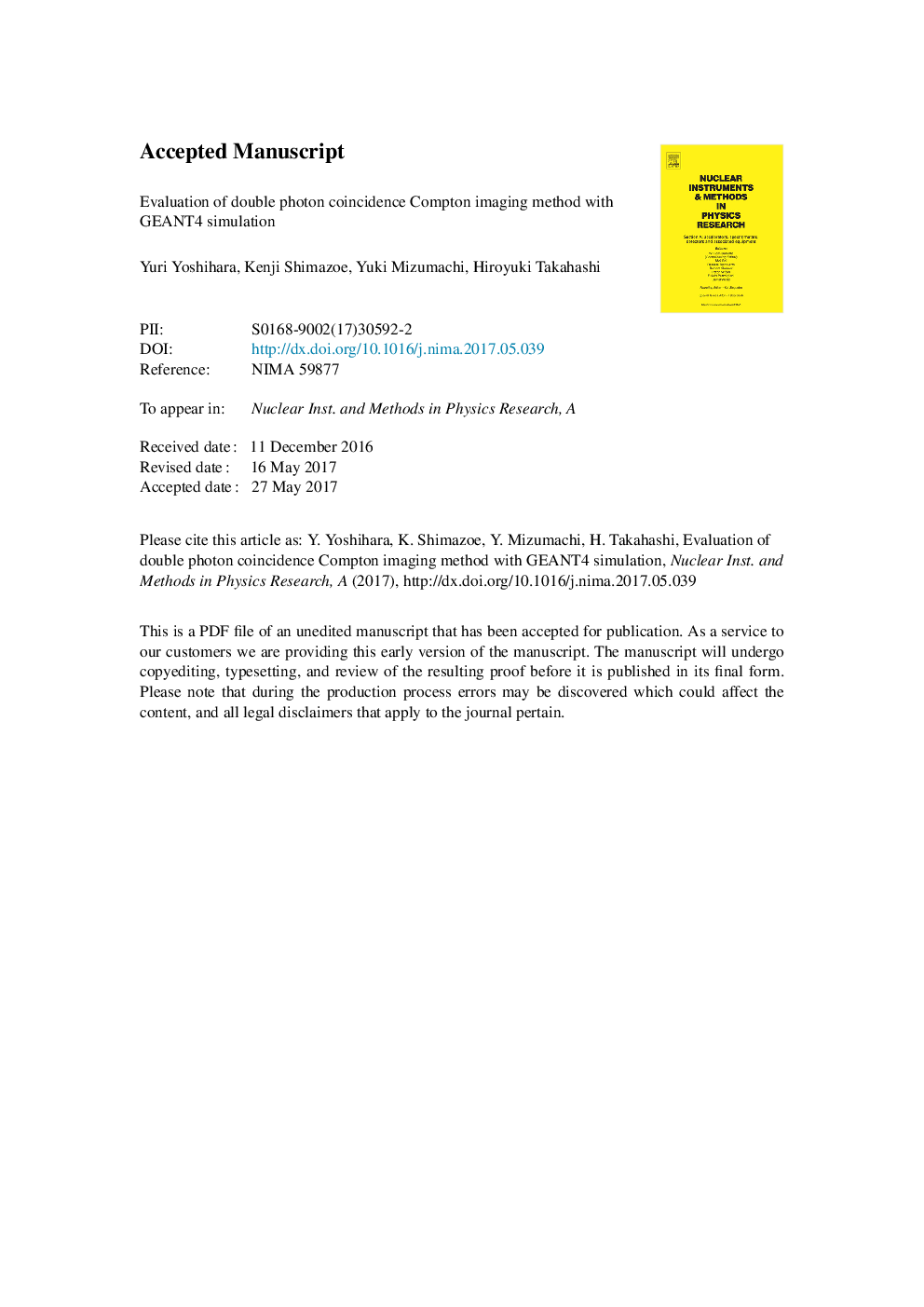| Article ID | Journal | Published Year | Pages | File Type |
|---|---|---|---|---|
| 8167951 | Nuclear Instruments and Methods in Physics Research Section A: Accelerators, Spectrometers, Detectors and Associated Equipment | 2017 | 8 Pages |
Abstract
Compton imaging has been used for various applications including astronomical observations, radioactive waste management, and biomedical imaging. The positions of radioisotopes are determined in the intersections of multiple cone traces through a large number of events, which reduces signal to noise ratio (SNR) of the images. We have developed an advanced Compton imaging method to localize radioisotopes with high SNR by using information of the interactions of Compton scattering caused by two gamma rays at the same time, as the double photon coincidence Compton imaging method. The targeted radioisotopes of this imaging method are specific nuclides that emit several gamma rays at the same time such as  60Co,  134Cs, and  111In, etc. Since their locations are determined in the intersections of two Compton cones, the most of cone traces would disappear in the three-dimensional space, which enhances the SNR and angular resolution. In this paper, the comparison of the double photon coincidence Compton imaging method and the single photon Compton imaging method was conducted by using GEANT4 Monte Carlo simulation.
Related Topics
Physical Sciences and Engineering
Physics and Astronomy
Instrumentation
Authors
Yuri Yoshihara, Kenji Shimazoe, Yuki Mizumachi, Hiroyuki Takahashi,
